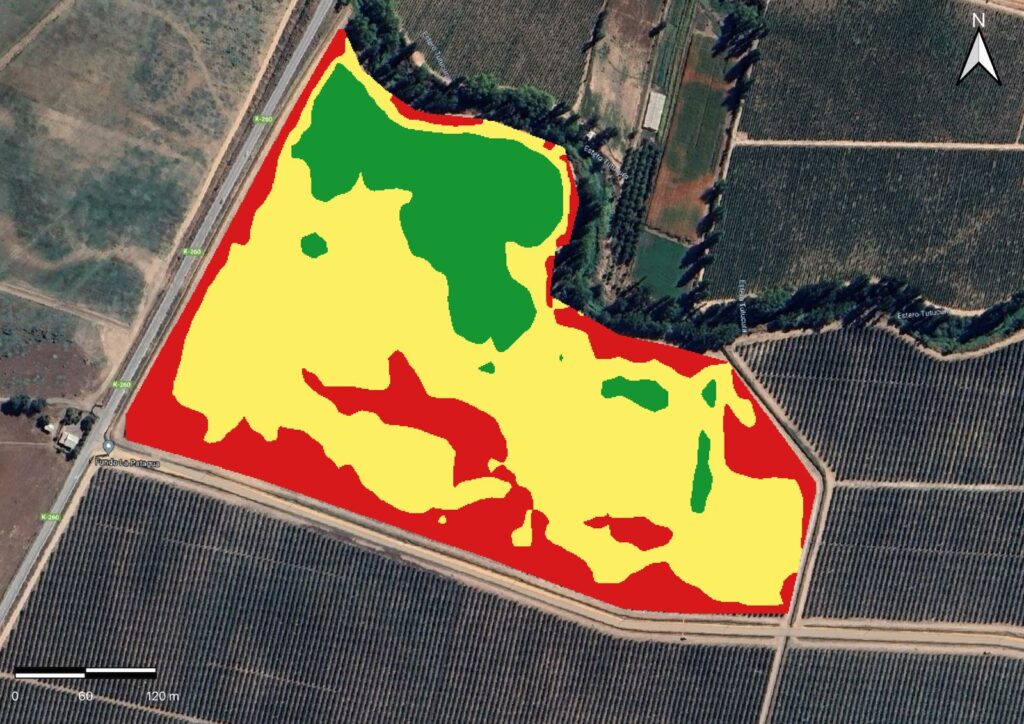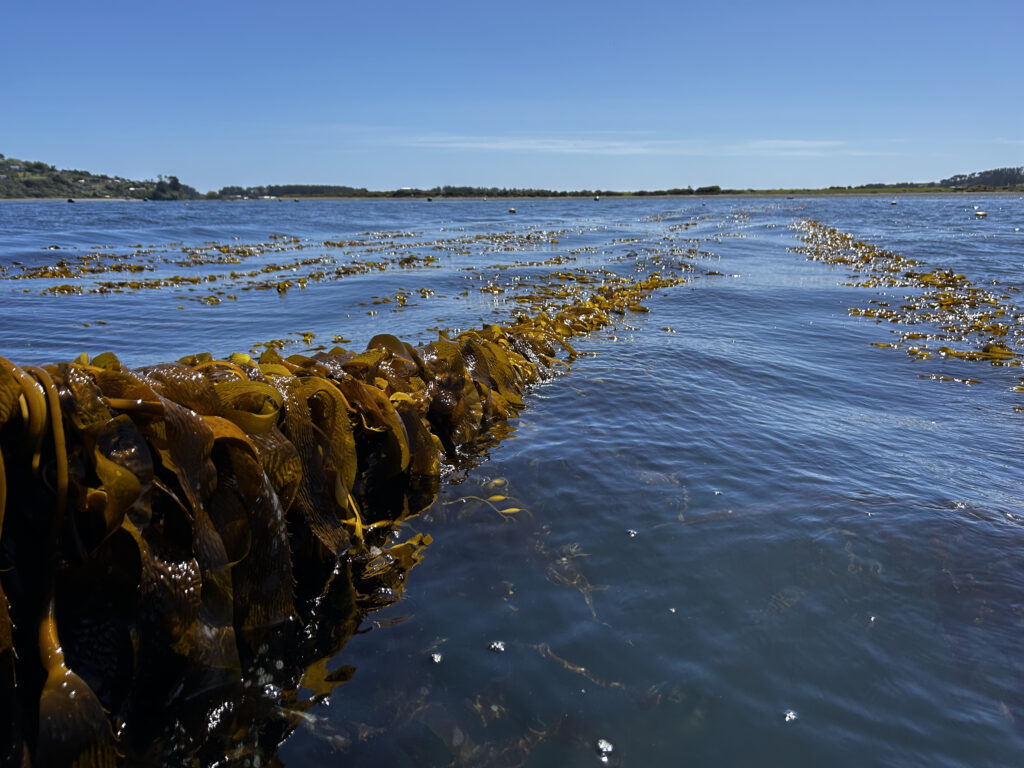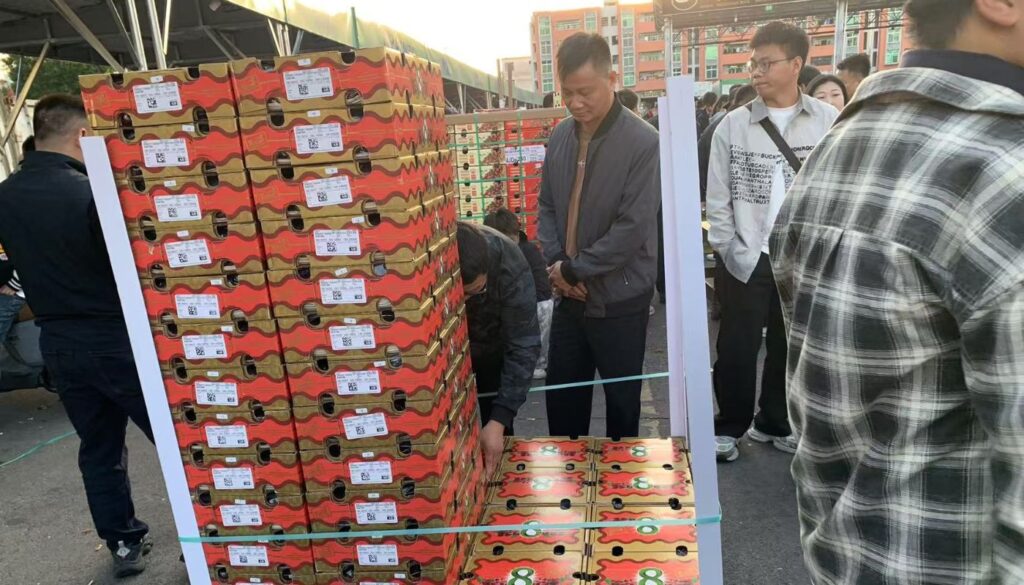Preliminary summary of bud fertility potential, 2023-2024 season.
In spring, cherry trees are known for their flowering, which is one of the most important aspects that start the season in the crop. Although the determination and prediction of the floral supply had previously been carried out with the analysis of bud fertility, it is necessary to incorporate new forms and/or approaches in the interpretation of this data and thus increase its precision when interpreting the information. This involves carefully observing the primordia present in the fruit centers of the tree, such as the twigs and shoots previously collected in each of the selected productive units of the orchard, in order to obtain an average statistic to determine the cultural management after studying the information collected year after year.

At the end of the current season with the cherry bud fertility analysis (BBFA), projections can be made to determine first-hand the results that will be obtained as the season progresses. The BBFA of the current season began in May and ended in early September, where studies can be carried out with historical data from the last 13 seasons, which allows a comparison to be made over a few years of certain orchards selected in the Maule region, located in early, medium and late zones, establishing with this type of information an objective quantitative analysis of the fertility dynamics of each variety/pi for each season.
According to the latest data released by IQonsulting in the 2023 cherry yearbook, Chile increased its productivity by 17% compared to the previous season 2021-2022; It is true that this goes hand in hand with the increase in the planting of the crop and the entry into production of those orchards older than 3 years in the national territory, but it also tells us about the specialization of this type of tools, therefore, the use of this information allows us to objectify important tasks, such as pruning intensity, bud thinning strategies and/or the use of different strategies to improve fruit set in the face of adverse weather events during the season.

The following graphs (Fig. 1 and 2) present data taken from the agroclima.cl platform from different stations in important cherry production locations, which were averaged to represent a reference value for each region; this general information on cold accumulation (Base 7.2 °C) allows us to understand the state of the crop this season. By observing the graph, it can be concluded that the cold accumulation in 2023 is similar to the accumulation in 2020 in both graphs (Fig. 1 and 2). It is also evident that all accumulations this year are widely lower, ranging from 17% to 40% less, with the most affected areas being the Metropolitan region and O'Higgins. The above is relevant, as it could affect the first phenological stages of the crop, mainly in flowering, since problems of delay and/or unevenness in the opening of the flower could occur. This situation can be mitigated in spring if good environmental conditions exist in these states, which would cause a synergy in the opening of the flower and the fertilization processes for each variety.
Figure 1. Average cold hours graph for the north/south central zone from May 1 to July 31, 2023. Fountain: www.agroclima.cl.

Figure 2. Chart of average cold hours in the southern area from May 1 to July 31, 2023. Fountain: www.agroclima.cl.


As mentioned above, the accumulation of cold hours is very important for the first phenological stages of the cherry tree, since it allows a good "awakening" of the fruit centers, which would have a great impact on obtaining adequate fruit sets for each condition, which could represent a more uniform flowering, therefore, “The accumulation of cold hours is directly related to the use of the reserves that the trees have to start the next season in favor of the productive objective of achieving their potential in terms of quantity, quality and condition of the fruit.” (C. Tapia; 2021); the adequate amount of cold hours would have positive effects on the fruit set and productivity of the plant, on the contrary, the low availability of cold hours per variety would generate uneven flowering, therefore, a lower availability of reserves, which makes it necessary to use these highly relevant analytical tools in decision-making in the cultural management of the field.
Table 1. Analysis of bud fertility in orchard shoots in full production, current results 2023-2024 compared in percentage with previous seasons A, B and C. Fountain: Bud fertility analysis 2012 -2023 Avium team.


Regarding the analysis of the 2023-2024 season versus the last three seasons, it is seen that the Lapins variety has had an average increase of 14,25% of primordia/dart in producers A, B, C and E, while the Santina variety, in the same period of time, has had a decrease in producers A, C and E; It is true that the graphs show a downward trend line if we observe the historical data of all the seasons in a macro way, however, it is worth mentioning that the last three seasons in Lapins there is an increase in Colt rootstocks, and a decrease in MaxMa 14 rootstock, in the same way the Santina variety behaves, maintaining its supply of primordia/darts in balance with the three previous seasons, mentioned above with a macro view of a downward trend.
Table 2. Analysis of bud fertility in orchard shoots in full production, current results 2023-2024 compared in percentage terms with previous seasons for producers D and E. Fountain: Bud fertility analysis 2012 -2023 Avium team.


The Regina variety in Gisela 6 and 12 presents data that suggest that it will be a year of decreasing floral supply if we observe the D and E producers, which is consistent with the trend line that has shown a minimal downward oscillation throughout history; the Sweetheart and Royal Dawn varieties also show a decline for this season (Table 1). The study of these indices is related to producers that have been able to be evaluated for several productive cycles and have been a micromodel to visualize the upcoming floral load. The downward trend observed in most varieties allows us to conclude that the number of flowers per stalk is directly related to the number of flower buds/stalk.
However, another interesting trend has also been identified, which indicates a direct relationship between the number of flower primordia per bud and the number of flower buds per dart, that is, a dart with a greater number of flower buds should have a greater number of primordia per bud and vice versa as shown in the following scatter graph (Image 3); this information has been possible to quantify thanks to more than 7 thousand bud analyses carried out by the Avium team in the last 8 seasons.
Figure 3. Chart per bud based on floral buds per scion cv. Lapins, Santina and Regina all combinations. Fountain: Bud fertility analysis 2012 -2023 Avium team.

Fountain:
- Tapia. C. (2021) The importance of the accumulation of chill hours for cherry orchards. Smartcherry Portal.
- IQonsulting (2023) Market Yearbooks 2023 – International Cherries Market. IQonsulting Portal.








